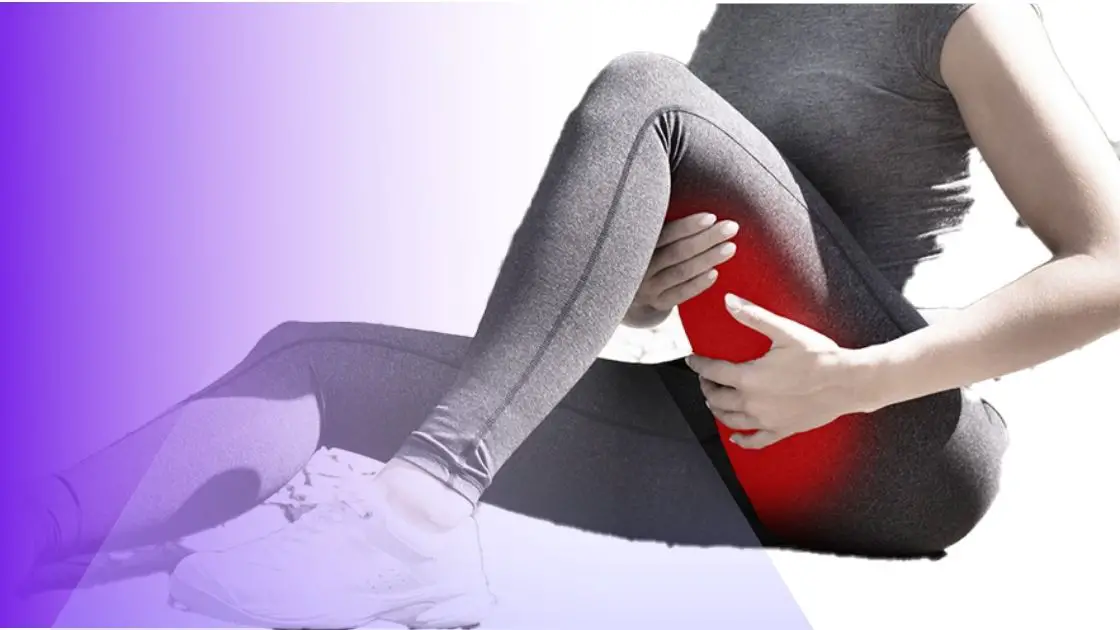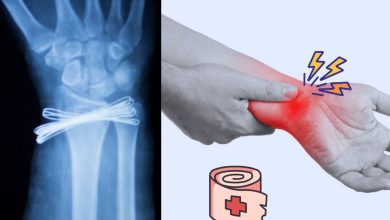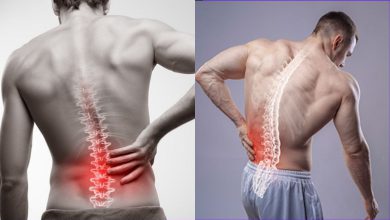Hamstring muscles are a group of three muscles behind the thigh. They are responsible for bending legs. Crossfit hamstring injury can occur due to overstretching or an intense pull.
Hamstring muscles are highly susceptible to injuries. Hamstring injuries can also happen for athletes in soccer, basketball, tennis, and exercises that involve sprinting and sudden change of direction.
Table of Contents
Why Does Crossfit Hamstring Injury Happen?
- Overloading muscles—Injury occurs when a muscle is stretched beyond its limit or loaded with sudden pressure.
- Muscle tightness – Skipping warm-up and particularly stretching before the main exercise increases the risk of injury.
- Muscle imbalance – Muscles are in opposing groups, and they alternatively pull limbs. When one muscle group is significantly stronger than the other, this increases the risk of injury. In particular, quadriceps muscles are stronger than hamstrings. During continuous sprinting activity, the hamstring gets fatigued sooner than the quads. This fatigue can lead to Crossfit hamstring injury throughout the activity.
- Poor conditioning – Weak or untrained muscles are more susceptible to injury when they undergo stress of exercise.
A hamstring muscle injury is more likely to happen in adolescent athletes. The reason is that there is a difference between the rate of growth of muscles and bones. When bone grows taller, it stretches the muscle tight, making it vulnerable to injury. A sudden jump or stress can tear the muscle away.
3 Grades of Crossfit Hamstring Injury
- Grade I: A partial muscle pull or strain. It will typically be healed in a few days.
- Grade II: A minor tear in the muscle.
- Grade III: A complete muscle tear, or it may be a tear in an attachment to bone.
How Long Does It Take for Hamstring Strain or Tear to Heal?
A mild grade I CrossFit hamstring injury can be healed in two to eight weeks. Grade II and III may take weeks or months to be adequately healed, depending on the scale of the injury, nutrition, rest, and other factors.
Crossfit with Hamstring Injury
Workout through a partial CrossFit hamstring injury which is not healed can deteriorate it into a grade III injury. Perhaps it’s wise to take a few weeks off of it.
Studies show that almost one-third of recurrent hamstring injuries happen within the first year, following the return to exercise. Oftentimes, these recurring injuries are more severe than initial ones.
This high rate of recurring hamstring injuries indicates that athletes must be more cautious about their returning time. It is essential to properly evaluate sports criteria and consider all risk factors before returning to an exercise routine.
Cross Training for Hamstring Injury
In case you have to do Crossfit workout with hamstring injury, adapt your plan to the new conditions. Craft your routine mostly on the upper body like pull-ups, push-ups, and muscle-ups; do Crossfit bodyweight workout. Swimming and aquatic therapy can also be good alternatives, as they have both features of exercise and rehabilitation.
How do I Know if I Tore My Hamstring?
We often notice hamstring tear and hamstring strain are used interchangeably, but there are some differences. A muscle strain is when the muscle is twisted or overstretched, but it doesn’t mean it’s ripped. A hamstring strain is also known as “pulled hamstring”. A hamstring tear is when the muscle is overstretched to the extent that it is eventually torn apart.
Common Signs of a Crossfit Hamstring Injury
- Sharp pain, a mild grade I injury can produce a sharp pain at the time of injury usually felt at the back of thighs. Acute pain in the hamstring while squatting can be a sign. In grade I Crossfit hamstring injury usually there is no loss of muscle strength.
- Swelling and bruises at the back of your thighs, A partial grade II Crossfit hamstring injury is more sore and tender. There might be bruises in the area accompanied by losing muscle strength.
A grade III Crossfit Hamstring Injury May Present the Following Symptoms:
- A “popping” sound or sensation – Sharp pain can accompany a distinct “pop” sound.
- Difficulty in walking and standing.
- Painful bruises, swelling in the area – In case of complete tear of the tendon from muscle there can be bruises along with muscle lumpiness.
- Discomfort while sitting – it happens especially if the tendon is separated from the pelvic bone. It is known as proximal hamstring injury.
How to Heal a Hamstring Strain Fast?
RICE therapy is a recommended option for the first two or three days following a Crossfit hamstring injury. RICE is an acronym for a treatment method. It is advised for the initial stages of injuries in soft tissues such as muscles, tendons, and ligaments.
Rest. The body has a natural self-healing capability. Immobility prevents further deterioration of the Crossfit hamstring injury and allows self-healing mechanisms of the body to operate on the area. Using crutches or a knee splint is a wise decision to hold the leg in a stable position.
Ice. The first two or three days following a Crossfit hamstring injury are critical, as you will probably experience swelling in the area. Apply a pack of ice on the affected area as soon as possible and hold it for about 20 minutes. Repeat it every 2 to 3 hours.
Compression. Use an elastic compression bandage and wrap your thighs. It helps relieve the swelling while preventing extra movements. Don’t stretch it too tight; allow a natural blood flow in the area.
Elevation. Elevating your leg to a higher level than the heart decreases the blood flow in the part. Thus, it reduces bruises and inflammation in the area. Make use of cushions pillows or fold a blanket.

Regular Pain Killers
Taking painkillers such as paracetamol or non-steroidal anti-inflammatory drugs (NSAIDS) such as ibuprofen for about a week after the Crossfit hamstring injury.
Temporary use of NSAIDS such as ibuprofen can reduce inflammation. Nevertheless, always check the leaflet of the tablet and decide if it is suitable for you. Asking advice from a general practitioner can be a wise decision.
How to Exercise a Hamstring Injury? (Physical Therapy and Crossfit)
A quick return to your exercise following a Crossfit hamstring injury will deteriorate it. Nonetheless, long-term inactivity shrinks hamstring muscles, and scar tissue appears around the tear.
Gentle stretches and exercises after a few days when the pain subsides can help to prevent it. This training program can involve walking and gentle stretches. It’s best to consult a physiotherapist for a suitable training plan.
Surgery for Crossfit Hamstring Injury
The above suggestions are for partial grade I and II Crossfit hamstring injury. In case of a complete tear and grade III, which is not healed with any of the above methods, surgery will be the option.
How Long to Recover Hamstring Injury?
The rehabilitation period for a CrossFit hamstring injury varies based on:
The scale of the damage, whether it is a torn or pulled hamstring
Age
Overall physical fitness level and general health
History of torn hamstring
The part of the hamstring or tendon that is torn
Based on the rate of the damage (the number of muscle fibers that are torn), a hamstring strain recovery period can be longer or shorter. A partial hamstring pull or tear can take 4 to 8 weeks to heal. A more serious Crossfit hamstring injury can take 12 weeks. Recovery duration for a torn tendon is much longer. It can be from 3 months and more if you have surgery.
In severe Crossfit hamstring injury, returning to work or exercise should be consulted with a doctor.
How to Stop Hamstring Injuries?
Following tips can reduce the risk of Crossfit hamstring injury.
- Warm up before exercise
- Stretch, stay flexible. You can stretch after warm-up or after the exercise. Stretch only warmed muscles; hold in a stretched position for no more than 15 to 30 seconds.
- Choose exercises suitable for your fitness level.
- Conform with the proper form of the exercise.
- Vary your type of exercise. Don’t overuse the same muscle group and the same exercise.
- Consider rest days in your weekly training program.
- Listen to your body and take pain signs seriously.
Further reading:
How to recover from CrossFit back injury.
Crossfit Wrist Injury: Recovery and Reason.




